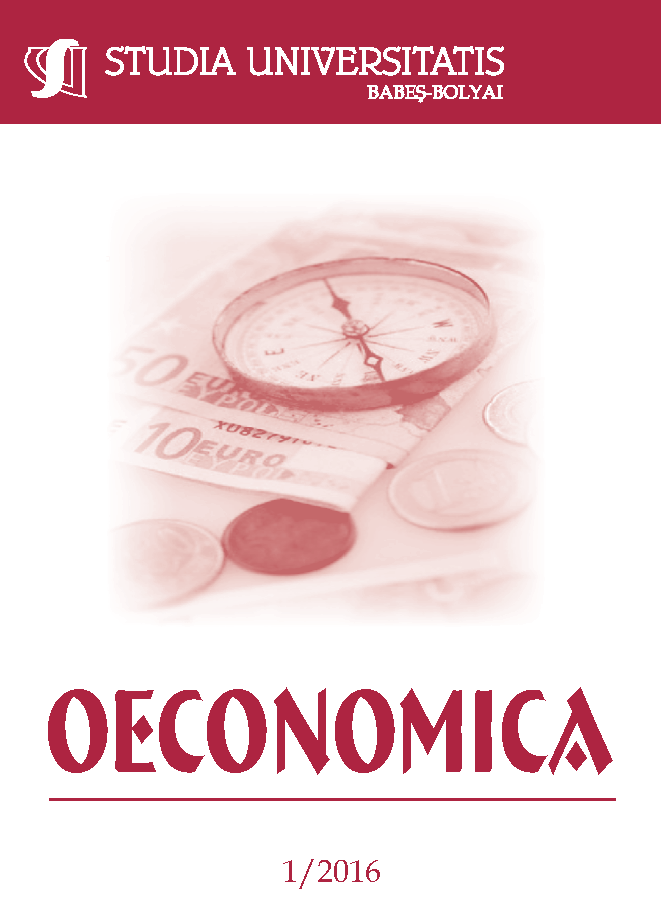OPTIMUM LEVEL OF INVESTMENT IN EDUCATION: SOME LESSONS FROM AN ENDOGENOUS GROWTH MODEL
Abstract
Previous results show that, at equilibrium, the common growth rate is independent of the share of resources spent on education. This paper, not only improves and extends these results, but also justifies some other approaches developed. It develops new results concerning the relationship existing between the economic growth and the resource allocated to education by assuming the case of a two sectors endogenous growth model, with the hypothesis that the share of resources spent on education is a control variable. This hypothesis is in perfect accordance with the economic reality. The share of resources spent on education is chosen by governments or by individuals and thus, this quantity cannot be arbitrarily chosen. As a consequence, it has to be a control variable in an optimal program. In this way, the share of resources spent on education, determined from the optimal problem, coincides almost exactly with that of developed countries.
JEL Classification: C61, J22, O41
References
Aghion., et al. (2009) The Causal Impact of Education on Economic Growth: Evidence from U.S. Working paper, Harvard University.
Alonso-Carrera J., Caballe J., Raurich X. (2005) Growth, habit formation, and catching-up with the Joneses, European Economic Review, 49, 1665− 1691.
Benhabib J., Spiegel M. (1994) The role of human capital in economic development: Evidence from aggregate cross-country data, Journal of Monetary Economics, 34 (2), 143 − 173.
Benhabib J., Perli R. (1994) Uniqueness and Indeterminacy: On the Dynamics of Endogenous Growth, Journal of Economic Theory, 63, 113 − 142.
Bennett R., Farmer R. (2000) Indeterminacy with nonseparable utility. Journal of Economic Theory, 93, 118-143.
Caballe J., Santos M. S. (1993) On Endogenous Growth with Physical Capital and Human Capital, Journal of Political Economy, 101,1042 − 1067.
Carroll C., Overland J.,Weil D. (1997) Comparison utility in a growth model, Journal of Economic Growth, 2, 339 − 367.
Chilarescu C., Viasu I. (2014) Investment in Education and Economic Growth, Proceedings of MAC-EMM 2014, December 5th−6th in Prague 2014, 1st edition.
Hanushek E., Kimko D. (2000) Schooling Labour Force Quality, and the Growth of Nations, American Economic Review, 90, 1184 − 1208.
Hanushek E., Woessmann L. (2008) The Role of Cognitive Skills in Economic Development, Journal of Economic Literature, 46, 607−668.
Judson R. (1998) Economic Growth and Investment in Education: How Allocation Matters, Journal of Economic Growth, 3, 337 − 359.
Lucas R. (1988) On the mechanics of economic development, Journal of Monetary Economics, 22; 3 − 42.
Mauro L., Carmeci G. (2003). Long run growth and investment in education: Does unemployment matter?, Journal of Macroeconomics, 25, 123 − 137.
Mankiw N. G., Romer D., Weil D. (1992) A contribution to the empirics of economic growth, Quarterly Journal of Economics, 107 (2), 407 − 437.
Pintus A. P. (2007) Local determinacy with non-separable utility, Journal of Economic Dynamics and Control, 31, 669 - 682.
Vandenbussche J., Aghion P., Meghir C. (2006). Growth, distance to frontier and composition of human capital, Journal of Economic Growth, 11 (2), 97 − 127.
Downloads
Published
How to Cite
Issue
Section
License
Copyright (c) 2016 Studia Universitatis Babeș-Bolyai Oeconomica

This work is licensed under a Creative Commons Attribution-NonCommercial-NoDerivatives 4.0 International License.






